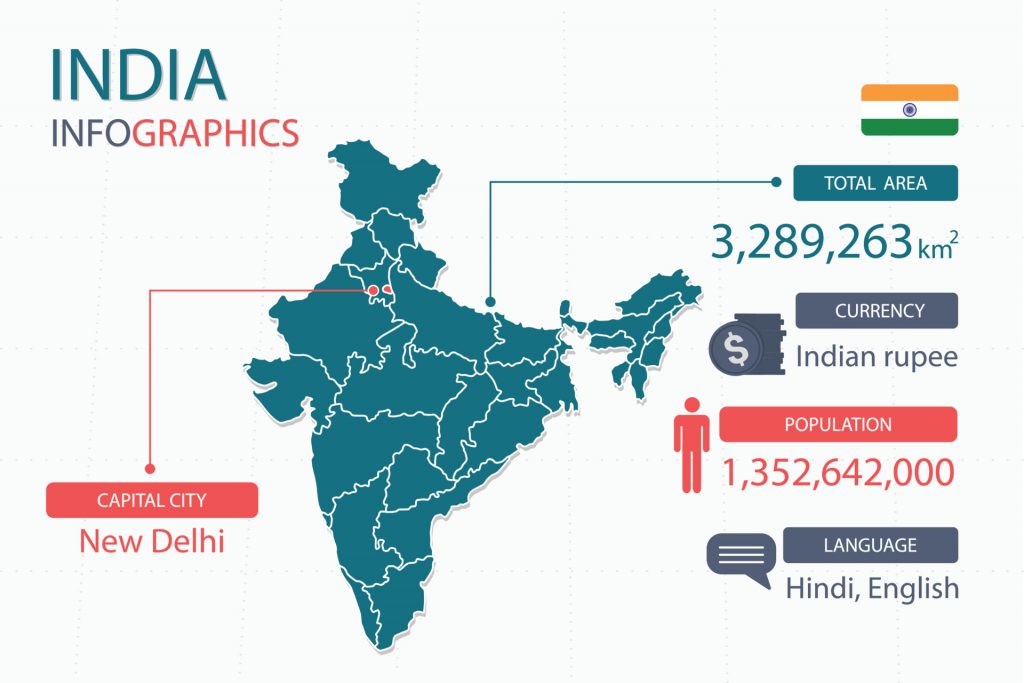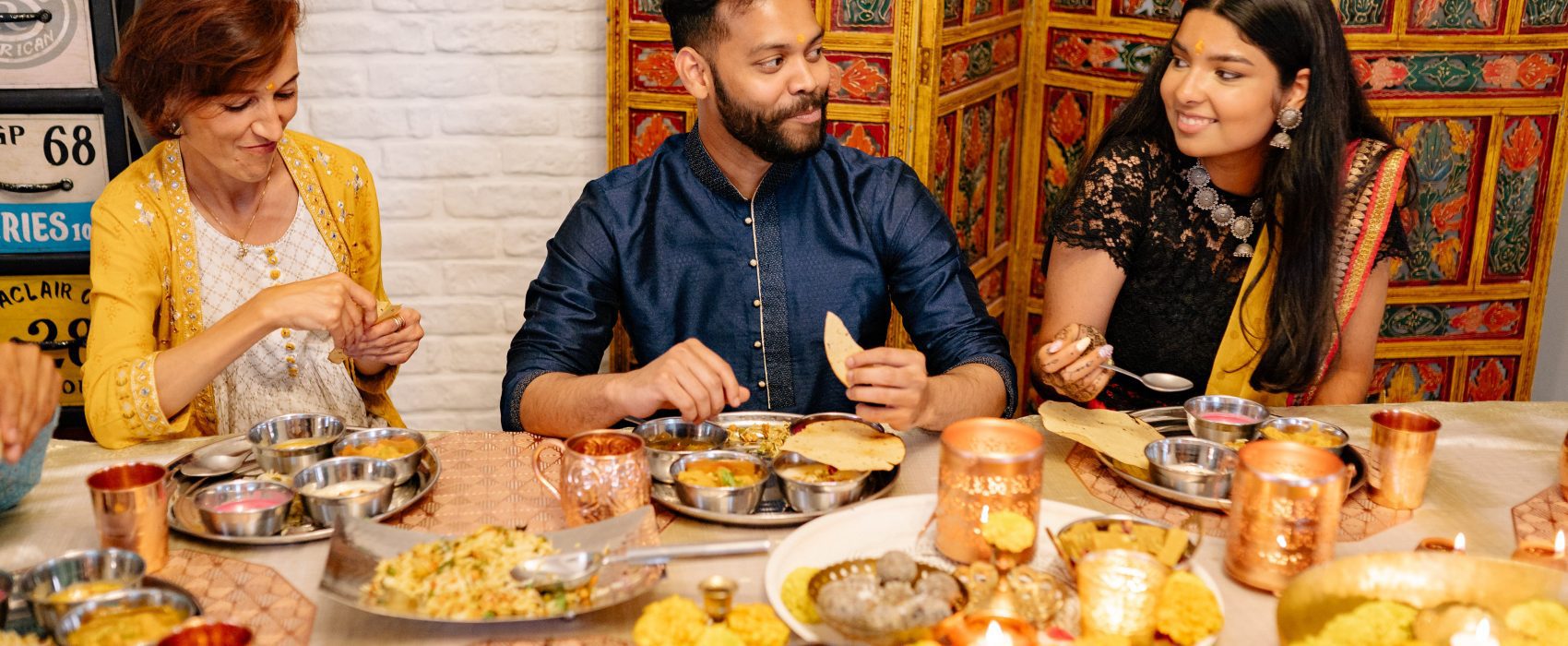The origins of the Hindi Language
Hindi language is considered one of the major languages of the world. It is the official language of the government of India, alongside English. It is also the lingua franca for those who reside in the region known as the ‘Hindi Belt’, which is a region in north-central India, where Hindi is a primary language. States in the Hindi belt include Bihar, Chattisgarh, Delhi, and Haryana, among others. In addition, it is the official language in Fiji, where the language is known as Fiji Hindi, and it is a recognized language in the following countries: Mauritius, Trinidad, Guyana , Tobago, and Suriname. Internationally, it is the 4th most spoken, after Simplified Chinese (Mandarin), Spanish, and English. There are 260 million speakers worldwide. Our Hindi translators have years of experience translating English to Hindi and Hindi to English translation for industries such as I.T, SAP, Business, the legal field, finances and accounting, Safety Data Sheets (SDS), Heavy Industries, Manufacturing and Human Resources.
Hindi is an interesting language to people outside of South Asia mainly because of its relation with Standard Urdu. Both Standard Hindi and Standard Urdu are considered by the majority of linguists to be standardized versions of the Hindustani language and thus share the same roots. However, there are some differences, and as time goes on, these differences will increase as the languages develop in their respective speech communities, especially with many speakers of each language emphasizing their distinctive characteristics.

The first and main difference between Standard Hindi and Standard Urdu has to do with how each language is written. Hindi is written with the Devanagari script, an abugida. This type of script contains consonants as the main component, which has an inherent vowel. However, vowel marks can be used to signify sound changes. It is written from left to right and from the top to the bottom of a page. A variety of other languages use Devanagari as well, including Nepali among others.
Standard Hindi, as an official version of Hindustani, is a subject-object-verb language, unlike more major European languages. That is, the verb usually comes at the end. As there are so many varieties spoken, even among just Standard Hindi, there are variations of rules and sentence patterns. The flexibility of word order is allowed because there is an extensive use of suffixes that connect to verbs and adjectives to convey specific meanings. It also contains gender classification for nouns (masculine and feminine), not unlike many European languages.
In terms of the history of Hindi, we need to turn to the history of Hindustani in general. Hindustani is a descendant of Shauraseni and its dialects. These include Brai Bhasha, Awadahi, and Khariboli, the language of Delhi. Standard Hindi is based on this Delhi vernacular. Hindi is considered a literary dialect of the Hindustani language derived from Khariboli, and in addition, takes on more characteristics of Sanskrit. This is another difference that seems to separate it from Urdu. The Urdu language was more of a colloquial version spoken by the Persian troops who invaded the Indian subcontinent. At this time, it was known as ‘language of the Ordu’ with Ordu meaning horde, and later it became shortened to Urdu. This fact is what differentiates Urdu from Hindi, to a certain extent, even though the languages remain mutually intelligible. Khariboli, however, was the main foundation of Hindustani in the 1800s, and thus, of both languages.
Before the Indian subcontinent was colonized by Britain under the British Raj, Persian was the dominant language. However, under the British Raj, there was a movement to make Hindustani an official language. However, the Hindu community wanted the new language to be written with the native Devanagari script, as opposed to the Persian script that would eventually be associated with Urdu.
In the 19th century, there was a movement to develop Hindi as a standard separate from Urdu. After independence from the British Empire, there was a standardization of grammar, with a Modern Hindi Grammar being written in 1958. There was also a standardization of spelling using the Devanagari script. To further differentiate Hindi from Urdu, much of the vocabulary used in Hindi is derived from Sanskrit, especially for technical and scientific words. In addition, many neoligisms were developed to replace Persian, Arabic, and English influences. With the separation of India and Pakistan, and with the majority of Indians being Hindu and the majority of Pakistanis being Muslim, this linguistic divide was made even more relevant. At this time, Hindi became associated with Hindu identity, while Urdu was more associated with Muslim populations.
Nowadays, Standard Hindi is a language that is culturally influential. As a language born out of debate and controversy, it is tied to the Hindu identity. Despite this, Hindi still features a significant influence from Persian, despite efforts to ‘purify’ the language. However, much of its modern vocabulary is derived from Sanskrit. There is a large body of Hindi literature with many styles. this literature stems from medieval to present times. In addition, Hindi binds together Indian culture as both a lingua franca and an official language of government. Thus, it is a prominent language in media in that region. Moreover, there is an Indian pop-culture ranging from aspects like Bollywood to Indian music, where the Hindi language is used and celebrated.
VEQTA can provide you with a perfect Hindi translator for your Hindi translation, English to Hindi translation and Hindi to english translation for the your targeted locale. Our translations to Hindi are created with your target audience in mind to meet your expectations.
If you need to translate Hindi – Get in touch today!
A dedicated team of Hindi translators who combines Experience, Specialized Subject Matter Expertise with best Translation Practices to deliver quality second to none.
Hindi Document Translation
Hindi Legal Translation
Hindi I.T Translation
Hindi Health & Fitness Translation
Hindi Medical Translation
Hindi Marketing Translation
Hindi Financial & Accounting Translation
Hindi Tourism & Travel Translation


